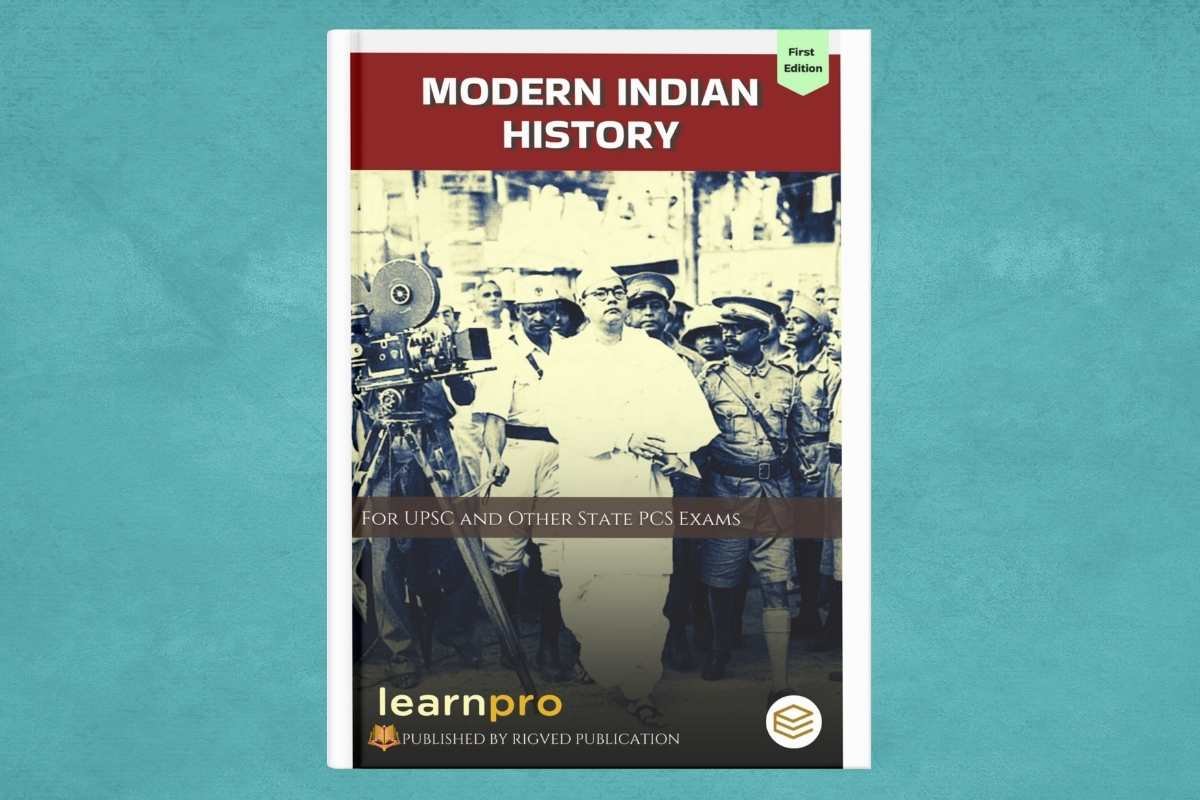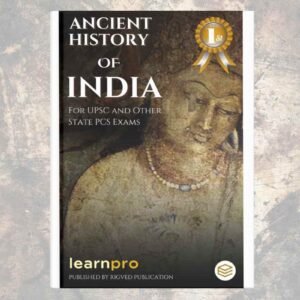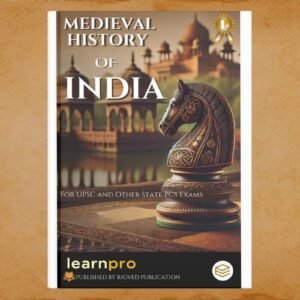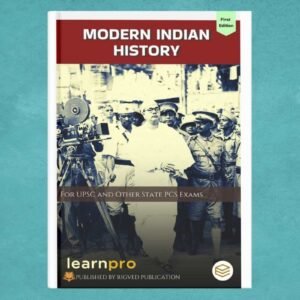Modern History Notes for UPSC and State PCS Exams
Original price was: ₹399.00.₹159.00Current price is: ₹159.00.
Modern History Notes for UPSC and State PCS Exams – These comprehensive Modern History Notes cover crucial topics like the advent of Europeans, British expansion, socio-religious reforms, freedom struggle, and constitutional developments. Designed for UPSC and State PCS Exams, these notes provide in-depth analysis, factual accuracy, and exam-oriented content to enhance your preparation.
Guaranteed Safe Checkout
- Satisfaction Guaranteed
- No Hassle Refunds
- Secure Payments
Description
Modern History Notes for UPSC and State PCS Exams
1. Advent of Europeans and Expansion
- Portuguese (1498): Vasco da Gama’s arrival, Portuguese trade monopoly, decline.
- Dutch (1602): Dutch East India Company, major settlements, decline.
- English (1600): Establishment of East India Company (EIC), key settlements, expansion.
- French (1664): French East India Company, Carnatic Wars, defeat by the British.
- Anglo-French Rivalry: Carnatic Wars (1746-1763), Battle of Wandiwash (1760).
2. British Conquest of India
- Battle of Plassey (1757): Robert Clive’s victory, Mir Jafar as puppet Nawab.
- Battle of Buxar (1764): British control over Bengal, Bihar, and Orissa.
- Dual System of Government (1765-72): British control over revenue, Nawab’s administrative role.
- Anglo-Mysore Wars (1767-1799): Tipu Sultan’s resistance, British victory.
- Anglo-Maratha Wars (1775-1818): Defeat of Marathas, British dominance.
- Anglo-Sikh Wars (1845-1849): Defeat of the Sikhs, annexation of Punjab.
3. British Economic Policies and Impact
- Drain of Wealth Theory: Dadabhai Naoroji’s analysis of British economic exploitation.
- Land Revenue Systems: Permanent Settlement (1793), Ryotwari System, Mahalwari System.
- Impact on Agriculture: Commercialization, famines, indigo crisis.
- Development of Railways and Infrastructure: British motives, impact on Indian economy.
- Deindustrialization: Decline of Indian handicrafts and traditional industries.
4. Social and Cultural Reforms in British India
- Raja Ram Mohan Roy (1772-1833): Abolition of Sati, Brahmo Samaj.
- Ishwar Chandra Vidyasagar (1820-1891): Widow remarriage, women’s education.
- Dayanand Saraswati (1824-1883): Arya Samaj, Vedic reforms.
- Swami Vivekananda (1863-1902): Ramakrishna Mission, Hindu revivalism.
- Jyotirao Phule and Savitribai Phule: Dalit and women’s education reforms.
- Aligarh Movement (Sir Syed Ahmed Khan): Muslim educational reforms.
5. Revolt of 1857
- Causes: Political, economic, military, social, and religious factors.
- Course of the Revolt: Major centers (Delhi, Kanpur, Lucknow, Jhansi, Bareilly).
- Leaders: Rani Lakshmibai, Nana Saheb, Kunwar Singh, Bahadur Shah II.
- Reasons for Failure: Lack of unity, limited resources, British military superiority.
- Impact: End of Mughal rule, Crown Rule, Government of India Act 1858.
6. Rise of Indian Nationalism
- Factors Leading to Nationalism: Economic exploitation, Western education, political unity.
- Early Nationalists (Moderates): Dadabhai Naoroji, Gopal Krishna Gokhale, Surendranath Banerjee.
- Extremists (Radicals): Bal Gangadhar Tilak, Bipin Chandra Pal, Lala Lajpat Rai.
- Formation of Indian National Congress (1885): Role of A.O. Hume, first session at Bombay.
7. Partition of Bengal (1905) and Swadeshi Movement
- Reasons for Partition: Divide and rule policy, communal divisions.
- Swadeshi and Boycott Movement: Use of indigenous goods, protests against British rule.
- Role of Leaders: Rabindranath Tagore, Aurobindo Ghosh, Tilak.
- Impact: Nationalist unity, economic self-reliance, annulment in 1911.
8. Revolutionary Movements (1905-1935)
- Anushilan Samiti and Jugantar: Secret societies, bomb attacks on British officials.
- Ghadar Movement (1913-1915): Role of Lala Hardayal, attempt to incite revolt.
- Hindustan Republican Association (HRA): Ram Prasad Bismil, Ashfaqulla Khan.
- Bhagat Singh and HSRA (1928-1931): Lahore Conspiracy, Assembly Bomb Case.
9. Gandhian Era (1915-1947)
- Champaran Satyagraha (1917): First major mass movement.
- Kheda Satyagraha (1918): Peasant resistance against taxation.
- Non-Cooperation Movement (1920-1922): Boycott of foreign goods, surrender of titles.
- Civil Disobedience Movement (1930-1934): Salt Satyagraha, Dandi March.
- Quit India Movement (1942): Call for immediate British withdrawal.
10. Constitutional Developments (1909-1947)
- Morley-Minto Reforms (1909): Separate electorates for Muslims.
- Montagu-Chelmsford Reforms (1919): Dyarchy in provinces.
- Government of India Act 1935: Provincial autonomy, federal structure.
- Cripps Mission (1942): Failed proposal for Indian self-rule.
- Cabinet Mission Plan (1946): Proposal for Indian federation.
11. Indian Independence and Partition (1947)
- Mountbatten Plan (1947): Proposal for partition.
- Indian Independence Act (1947): Creation of India and Pakistan.
- Role of Leaders: Gandhi, Nehru, Patel, Jinnah.
- Impact of Partition: Communal violence, refugee crisis, political challenges.
12. Post-Independence Developments (1947-1950)
- Integration of Princely States: Role of Sardar Patel, Hyderabad and Kashmir.
- Constituent Assembly and Drafting of the Constitution: Role of B.R. Ambedkar.
- Adoption of the Indian Constitution (1950): Key features and impact.




Reviews
There are no reviews yet.